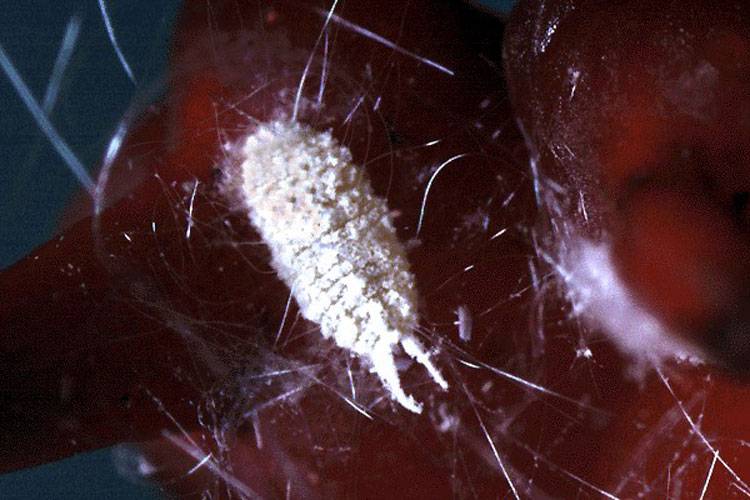Guava
Mealybug

Mealybug

Mealybug
Ferrisia virgata: The Striped Mealybug Threatening Global Crops
Ferrisia virgata, also known as the striped mealybug, is a highly polyphagous pest that poses a significant threat to agriculture, especially in tropical and subtropical climates. Originally described from Jamaica, this pest has rapidly spread across the globe due to international trade and the movement of infested plant materials. Its ability to infest over 200 plant genera makes it a formidable problem for fruit, spice, nut, and field crops.
1. Host Range and Distribution
F. virgata has been recorded on plants from 203 genera in 77 families. Key crops affected include:
-
Fruits: mango, banana, citrus, grapevine, guava, custard apple
-
Spices and industrial crops: black pepper, betel vine, cocoa, coffee, oil palm
-
Field crops: soybean, tomato, cotton, cassava
-
Others: cauliflower, avocado, litchi, jute, pigeon pea, and Acalypha species
It thrives in tropical and subtropical regions and can survive to some extent in temperate climates, making it a pest of global concern.
2. Identification and Appearance
-
Adult females: oval-shaped, up to 5 mm long, greyish-yellow with two submedian dark dorsal stripes and covered in long glassy wax threads (4.0–4.5 mm).
-
Adult males: winged, with long antennae and tail filaments; do not feed and cannot be used for reliable species identification.
Due to similarities with other Ferrisia species, expert microscopic examination or molecular tools are needed for accurate identification.
3. Damage and Symptoms
-
Infestations are concentrated on terminal shoots, leaves, and fruits, where the mealybugs suck plant sap.
-
Leads to yellowing, wilting, drying of leaves, and premature fruit drop.
-
Although F. virgata produces less honeydew than other mealybugs, it can still lead to black sooty mold growth, reducing photosynthesis and overall plant vigor.
-
Wax and mold deposits can also affect the visual and market quality of fruits and leaves.
4. Reproduction, Temperature & Humidity
-
F. virgata reproduces sexually, and each female mates only once.
-
At 30–35 °C and 65% relative humidity (RH), the life cycle completes in 6–7 weeks.
-
At 16.6 °C, development slows significantly, taking 13–14 weeks to complete a cycle.
-
Under 16–29 °C and 54–71% RH, studies found 3 to 5 overlapping generations per year.
-
Each female can lay between 64 and 737 eggs, often on the lower surfaces of leaves or stem joints, within a waxy mass. Eggs hatch within 30 minutes to a few hours of being laid.
5. Spread and Transmission
-
Local spread occurs via crawling nymphs, with females moving until egg-laying.
-
Wind, attendant ants, and even birds can aid in long-distance dispersal.
-
Human transport of infested plants remains the most significant cause of international spread.
-
F. virgata is also known to transmit badnavirus diseases, especially affecting cocoa and black pepper, making it both a physical and viral threat to crops.
Conclusion
With its wide host range, high reproductive capacity under favorable temperature and humidity, and ease of spread, Ferrisia virgata continues to pose a serious threat to agriculture worldwide. Early detection, stringent quarantine measures, and integrated pest management (IPM) strategies are essential to prevent further spread and crop damage.
